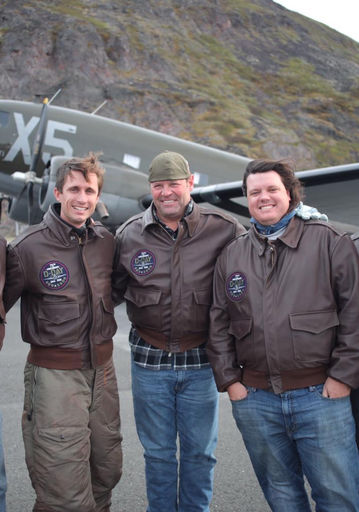top of page
CLUBS & ASSOCIATIONS













Civil Air Patrol (CAP)
-
ROCKETRY ADDITIONAL INFORMATIONAt the Flabob Rocket Lab we are exposing students to solid and liquid fueled rockets through onsite classes and internships. There will be approximately three class sessions throughout each year. Each session consists of an 9-week course in which classes are held once per week in the afternoon. The first three weeks of each session includes high school students. The remaining six weeks of instruction take a deeper dive into subjects that are better suited for more advanced students. The first 3 weeks of instruction include rocket components, tools and measurement, assembly, weight, balance, and stability. The remaining six weeks of instruction cover more in-depth aerodynamics, propulsion systems, engine testing, avionics, recovery systems, and finally data collection and analysis. Through collaboration with Friends of Amateur Rocketry (FAR) we have access to their world class rocket test and launch facility in the Mojave desert, just North of Edwards Air Force Base. Email Rocketry@flabob.org for more details and to reserve your spot in the upcoming sessions. Class sizes are currently limited to 5-10 students per session.

EAA Chapter 1
-
ROCKETRY ADDITIONAL INFORMATIONAt the Flabob Rocket Lab we are exposing students to solid and liquid fueled rockets through onsite classes and internships. There will be approximately three class sessions throughout each year. Each session consists of an 9-week course in which classes are held once per week in the afternoon. The first three weeks of each session includes high school students. The remaining six weeks of instruction take a deeper dive into subjects that are better suited for more advanced students. The first 3 weeks of instruction include rocket components, tools and measurement, assembly, weight, balance, and stability. The remaining six weeks of instruction cover more in-depth aerodynamics, propulsion systems, engine testing, avionics, recovery systems, and finally data collection and analysis. Through collaboration with Friends of Amateur Rocketry (FAR) we have access to their world class rocket test and launch facility in the Mojave desert, just North of Edwards Air Force Base. Email Rocketry@flabob.org for more details and to reserve your spot in the upcoming sessions. Class sizes are currently limited to 5-10 students per session.


Flabob DC3 Experiences
American Aviation Historical Society
-
ROCKETRY ADDITIONAL INFORMATIONAt the Flabob Rocket Lab we are exposing students to solid and liquid fueled rockets through onsite classes and internships. There will be approximately three class sessions throughout each year. Each session consists of an 9-week course in which classes are held once per week in the afternoon. The first three weeks of each session includes high school students. The remaining six weeks of instruction take a deeper dive into subjects that are better suited for more advanced students. The first 3 weeks of instruction include rocket components, tools and measurement, assembly, weight, balance, and stability. The remaining six weeks of instruction cover more in-depth aerodynamics, propulsion systems, engine testing, avionics, recovery systems, and finally data collection and analysis. Through collaboration with Friends of Amateur Rocketry (FAR) we have access to their world class rocket test and launch facility in the Mojave desert, just North of Edwards Air Force Base. Email Rocketry@flabob.org for more details and to reserve your spot in the upcoming sessions. Class sizes are currently limited to 5-10 students per session.
-
ROCKETRY ADDITIONAL INFORMATIONAt the Flabob Rocket Lab we are exposing students to solid and liquid fueled rockets through onsite classes and internships. There will be approximately three class sessions throughout each year. Each session consists of an 9-week course in which classes are held once per week in the afternoon. The first three weeks of each session includes high school students. The remaining six weeks of instruction take a deeper dive into subjects that are better suited for more advanced students. The first 3 weeks of instruction include rocket components, tools and measurement, assembly, weight, balance, and stability. The remaining six weeks of instruction cover more in-depth aerodynamics, propulsion systems, engine testing, avionics, recovery systems, and finally data collection and analysis. Through collaboration with Friends of Amateur Rocketry (FAR) we have access to their world class rocket test and launch facility in the Mojave desert, just North of Edwards Air Force Base. Email Rocketry@flabob.org for more details and to reserve your spot in the upcoming sessions. Class sizes are currently limited to 5-10 students per session.

Wright Flyer Project
-
ROCKETRY ADDITIONAL INFORMATIONAt the Flabob Rocket Lab we are exposing students to solid and liquid fueled rockets through onsite classes and internships. There will be approximately three class sessions throughout each year. Each session consists of an 9-week course in which classes are held once per week in the afternoon. The first three weeks of each session includes high school students. The remaining six weeks of instruction take a deeper dive into subjects that are better suited for more advanced students. The first 3 weeks of instruction include rocket components, tools and measurement, assembly, weight, balance, and stability. The remaining six weeks of instruction cover more in-depth aerodynamics, propulsion systems, engine testing, avionics, recovery systems, and finally data collection and analysis. Through collaboration with Friends of Amateur Rocketry (FAR) we have access to their world class rocket test and launch facility in the Mojave desert, just North of Edwards Air Force Base. Email Rocketry@flabob.org for more details and to reserve your spot in the upcoming sessions. Class sizes are currently limited to 5-10 students per session.
bottom of page

_inPixio.png)